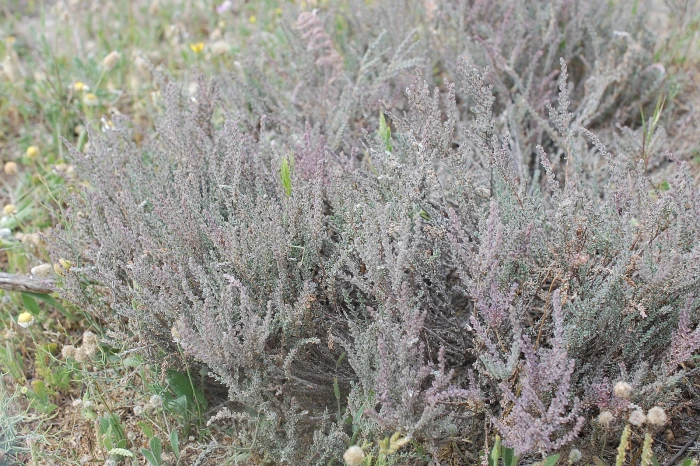Sea Heath
(Frankenia thymifolia)
Sea Heath (Frankenia thymifolia)
/
/

Giacomo Braschi
CC BY-SA 4.0
Image By:
Giacomo Braschi
Recorded By:
Copyright:
CC BY-SA 4.0
Copyright Notice:
Photo by: Giacomo Braschi | License Type: CC BY-SA 4.0 | License URL: https://creativecommons.org/licenses/by-sa/4.0 | Uploader: Giacomo Braschi | Publisher: Wikipedia Commons












Estimated Native Range
Climate Requirements for Montréal, Canada
| This Plant | Your Site | Plant Suitability for Your Location | ||
|---|---|---|---|---|
| • Precipitation | 3" - 55" | 41" | Aquatic | Aquatic |
| • High Temp. | 67°F - 106°F | 81°F | Your summer temperatures are normal for this plant. | Excellent |
| • Low Temp. | 16°F - 46°F | 5°F | Your winter temperatures may be too cold for this plant | Too cold |
This plant may not grow well at your location - your precipitation is too high.
Summary
Frankenia thymifolia, commonly known as Sea Heath, is an evergreen subshrub native to coastal areas, salt marshes, and alkaline soils in North Africa and the Iberian Peninsula. It typically grows to a height of 0.5 feet (0.2 meters) and spreads 1-2 feet (0.3-0.6 meters), forming a low, dense mat of fine, thyme-like foliage. The plant is well-adapted to harsh seaside conditions, thriving in saline environments where few other plants can survive.
Sea Heath is valued for its resilience to salt spray and its ability to stabilize soil, making it an excellent choice for coastal gardens and xeriscaping. It produces small, white, five-petaled flowers from late spring to summer, which are modest in size but can be quite numerous, creating a delicate, frothy appearance. This subshrub is also appreciated for its minimal water needs and its tolerance of poor, sandy soils with good drainage. It is often used as ground cover, in rock gardens, or in borders where its low stature and spreading habit can be showcased. While it prefers full sun, it can tolerate light shade. Sea Heath is generally free from serious pests and diseases but can suffer from root rot if overwatered or planted in poorly drained soils. It is not known to be invasive and is considered a low-maintenance plant suitable for environmentally challenging sites.CC BY-SA 4.0
Sea Heath is valued for its resilience to salt spray and its ability to stabilize soil, making it an excellent choice for coastal gardens and xeriscaping. It produces small, white, five-petaled flowers from late spring to summer, which are modest in size but can be quite numerous, creating a delicate, frothy appearance. This subshrub is also appreciated for its minimal water needs and its tolerance of poor, sandy soils with good drainage. It is often used as ground cover, in rock gardens, or in borders where its low stature and spreading habit can be showcased. While it prefers full sun, it can tolerate light shade. Sea Heath is generally free from serious pests and diseases but can suffer from root rot if overwatered or planted in poorly drained soils. It is not known to be invasive and is considered a low-maintenance plant suitable for environmentally challenging sites.CC BY-SA 4.0
Plant Description
- Plant Type: Subshrub
- Height: 0.1-0.5 feet
- Width: 1-2 feet
- Growth Rate: Moderate
- Flower Color: White
- Flowering Season: Spring, Summer
- Leaf Retention: Evergreen
Growth Requirements
- Sun: Full Sun
- Water: Low, Medium
- Drainage: Medium, Fast
Common Uses
Bee Garden, Bird Garden, Butterfly Garden, Groundcover, Low Maintenance
Natural Habitat
Coastal areas, salt marshes, and alkaline soils in North Africa and the Iberian Peninsula
Other Names
Common Names:
Scientific Names: Frankenia thymifolia, Frankenia reuteri, Franca thymifolia
GBIF Accepted Name: Frankenia thymifolia Desf.